Although the National Geographic Upper Amazon cruise was great, one fundamental drawback of cruising is that we’re constantly on the move, which doesn’t allow time for an immersive experience. Given the alarming pace of extinction among endemic species in the Amazon, an ecolodge stay for more in-depth encounters with local flora and fauna made sense. I had so enjoyed the Ecuadoran ‘jungle camp’ from my first Amazon trip that when I saw Muyuna Lodge offering a lakeside camp option, albeit under rather austere conditions, I sprang for a 5 day package.
After disembarking the Delfin II, we wandered around Iquitos looking for dining options and raiding ATMs. We headed for the Lodge office the following morning to settle the bill (cash only) and get fitted for rubber boots, an indispensable part of our fashion wardrobe over the next few days.
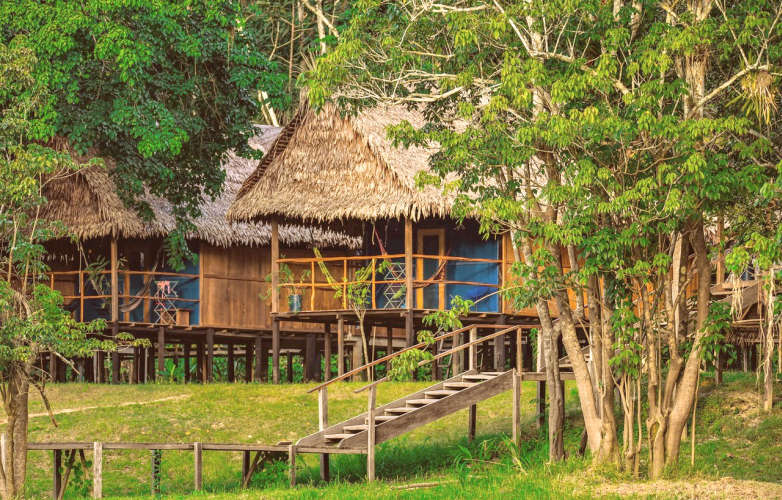
We finally reached the lodge after a 3 hour boat ride up the Yanayacu river. The structures are on stilts to counter the seasonal fluctuations of the Amazon river and built primarily with local materials. The lodge is powered by solar energy and there is no internet connection.
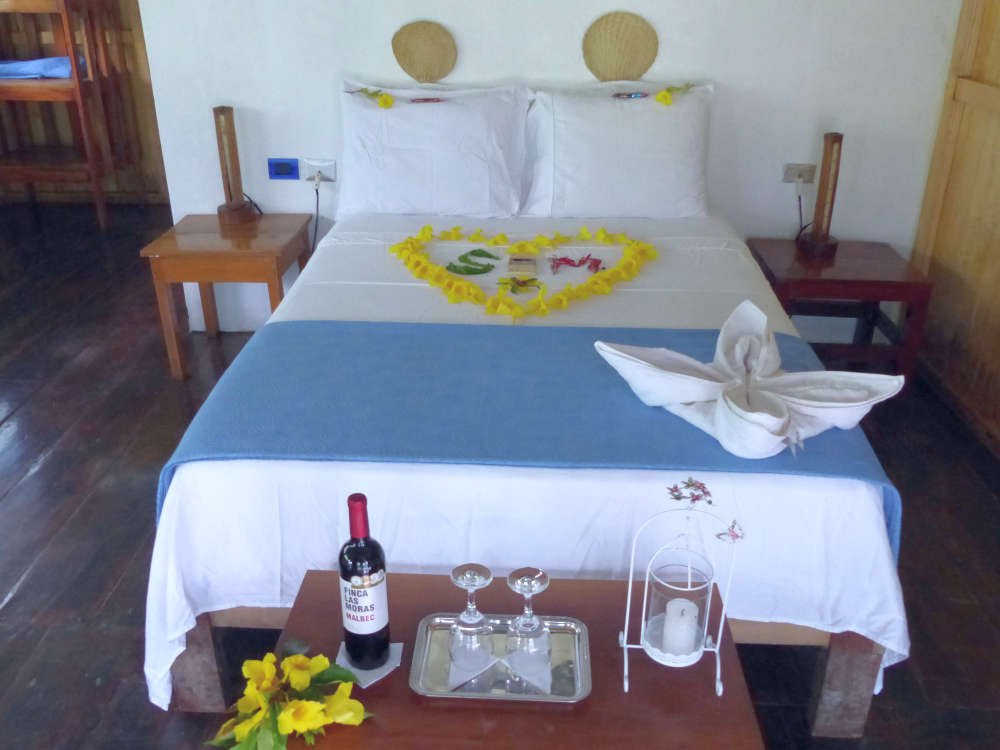
We found a bottle of wine and some 70% cacao chocolates in our cabin as a welcome gift. The environmentally conscious units are simple but adequate to meet our needs.
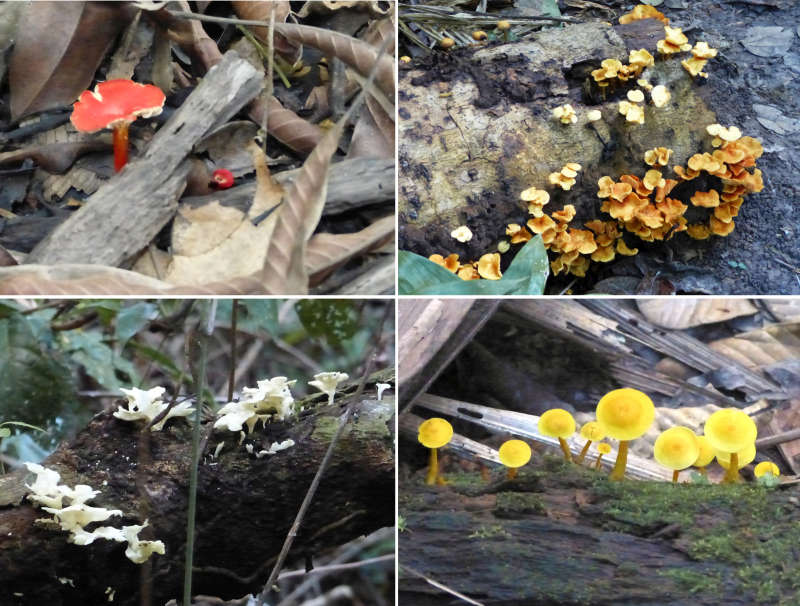
Since we are ‘vacation birders’, I booked the lodge’s bird guide for our stay. Moises met up with us after lunch for our first excursion. Given the rainforest’s high humidity, mushrooms of all stripes thrive here and pop up in a riot of colors.

It was a great outing with a plethora of birds in the nearby waterways. I saw this Cocoi Heron catching the last rays of the day as we waited for Amazon sunset.
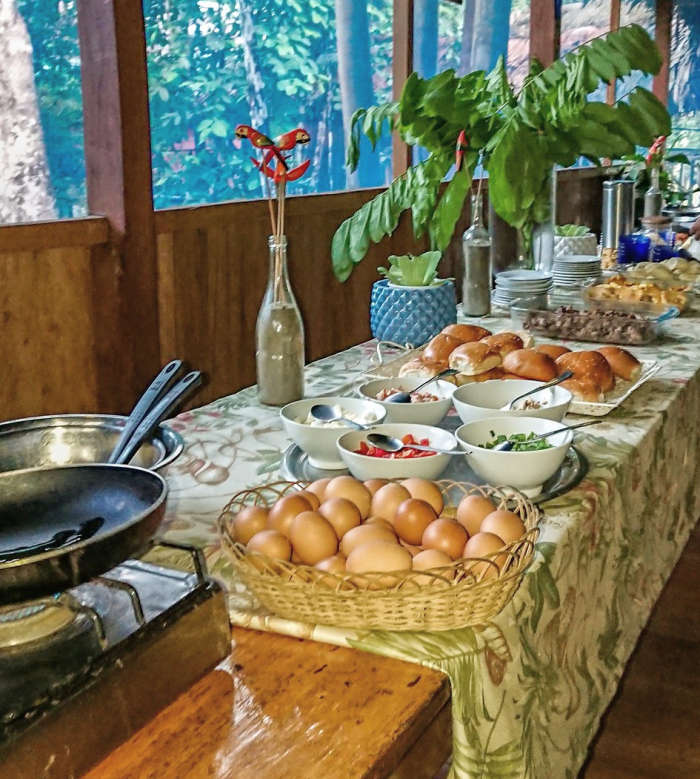
Food at the lodge is served buffet style. As is the case for nature tours, birds are most active at sunrise, early morning or around sunset. So one gets up at some ungodly hour during what is supposed to be a vacation in hopes of getting some good avian sightings. At least we could grab and go with a buffet breakfast when we wanted to enjoy a few more ZZZs!
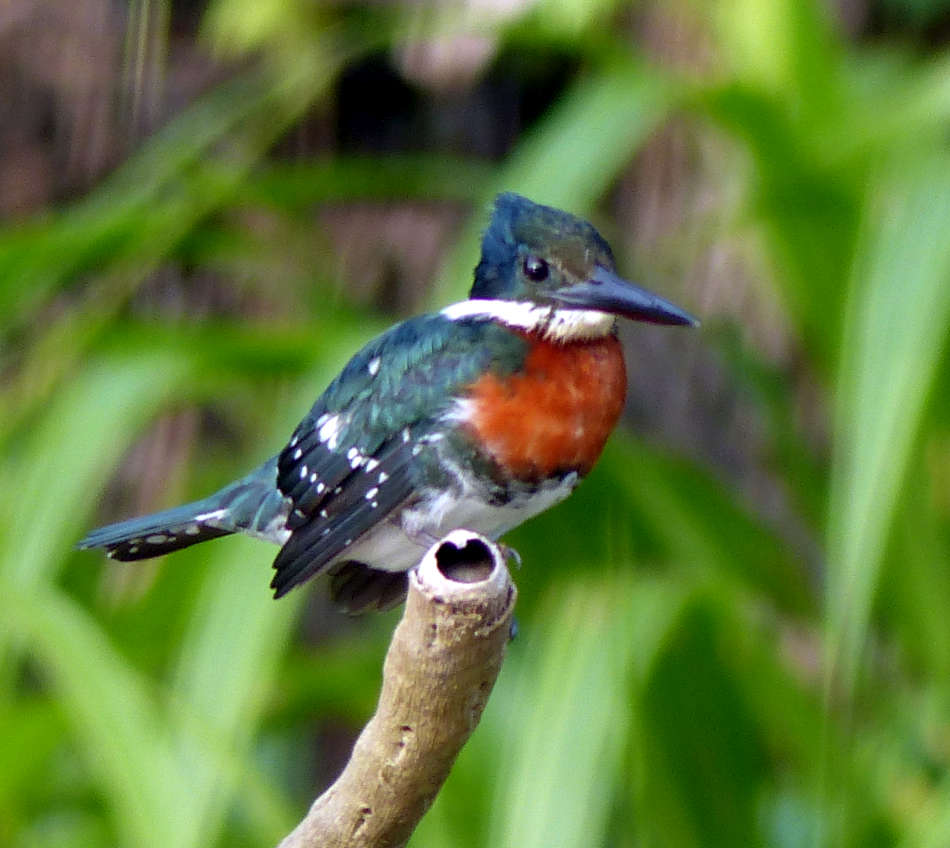
The Amazon Kingfisher is a colorful crested bird that hunts for fish and other aquatic life from its perch on riverside shrubbery. Though not its usual diet, I noticed the egg with a cracked top neatly stuffed inside the hollow branch. Wonder if the chick had fletched or it was the kingfisher’s breakfast…
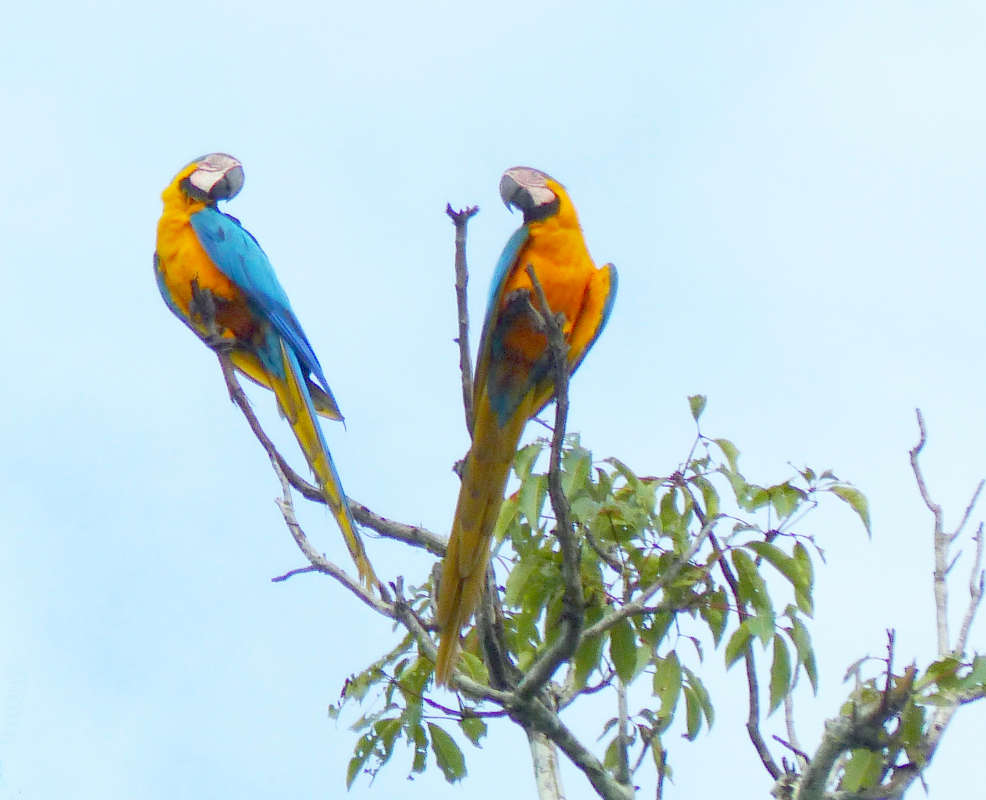
The raucous Blue and Yellow Macaws are hard to miss. They are usually found in pairs even though these were actually part of a small flock congregating on the top of a tree.

This cute little critter – it’s maximum height is 15″ and weighs less than 2.5 lbs – is a Squirrel Monkey, a New-World monkey native to the upper Amazon basin. Unfortunately, their numbers are decreasing due to habitat loss and poaching. Large numbers have been imported into the US in recent years by research labs, zoos, and the pet trade despite the fact it’s illegal to keep monkeys as pets in most states.
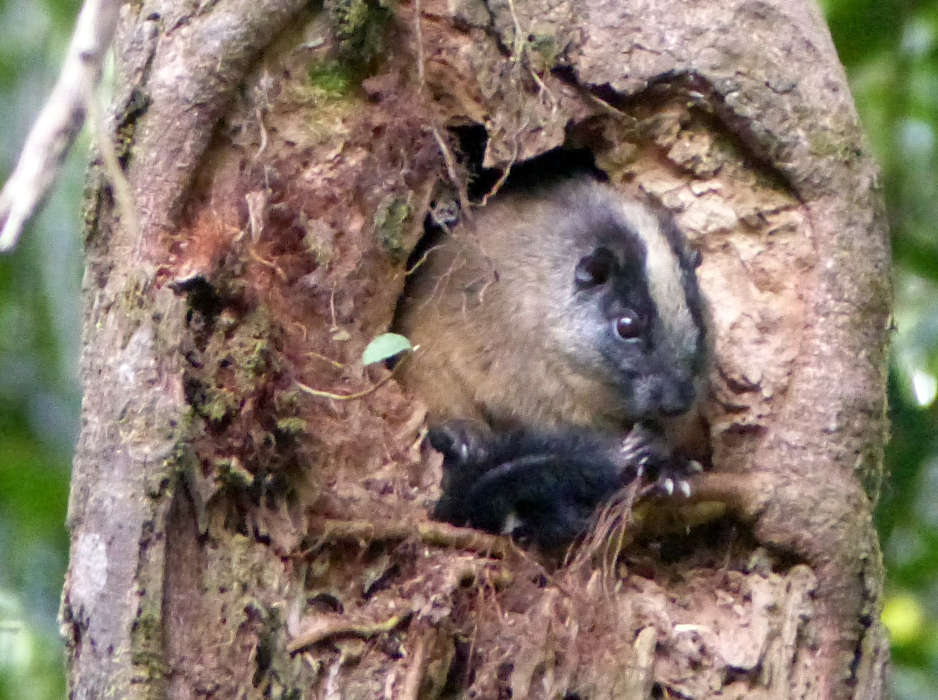
Another small cute mammal – this time a Yellow Crowned Brush Tailed Tree Rat. Like the Night Monkey, this is supposedly a nocturnal animal, but it’s wide awake nestled in the comfort of its den an hour or so before sunset.
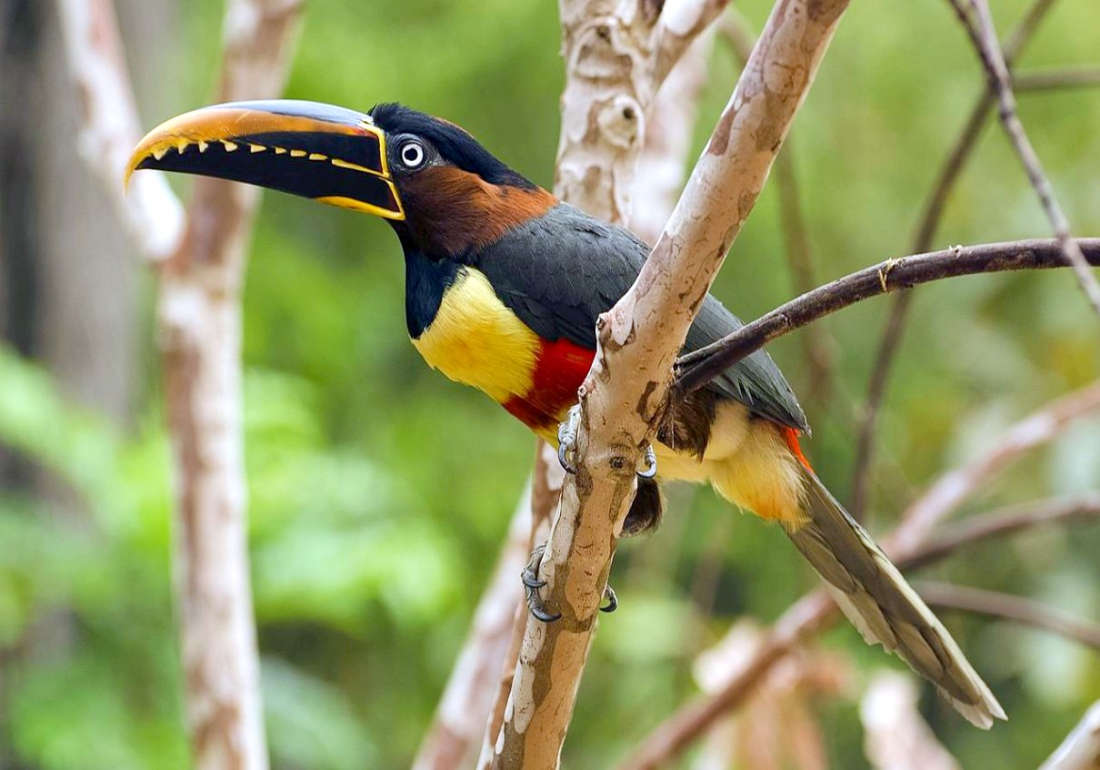
The showy Chestnut Eared Aracari is a smaller relative of the toucan family. At 18″ tall, it’s kind of hard to miss, even though I did my best to do exactly that, driving Moises to distraction!
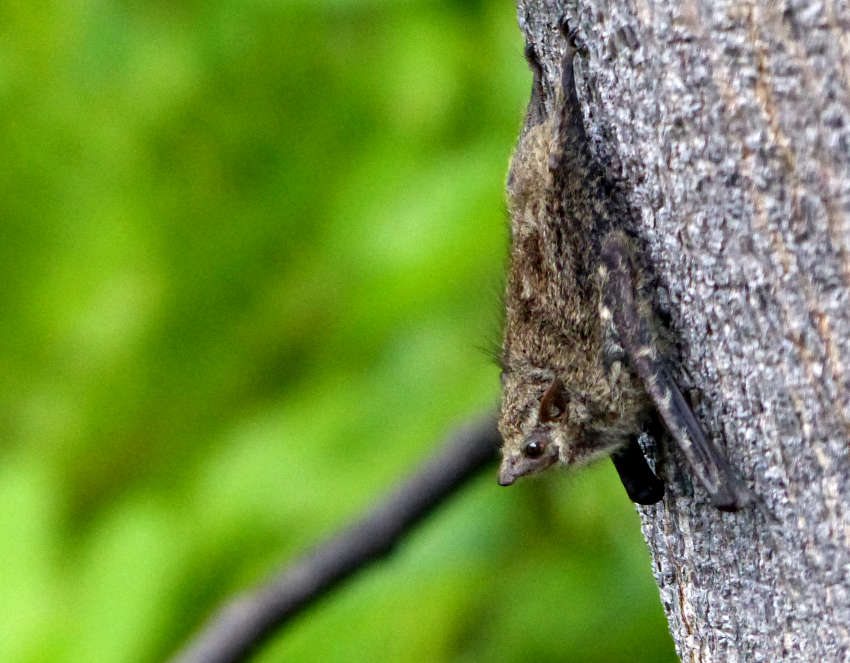
On our third day’s excursions, we found a colony of 15 Long-nosed Bats. It was before 7 am but they were already resting from their night’s outing. What looked like a vertical line of dots turned out to be bats strung out neatly in single file along the tree trunk. It was surprising to see them hanging with their noses pointing down, but I assume it meant they were expecting more predators coming from below than the sky.
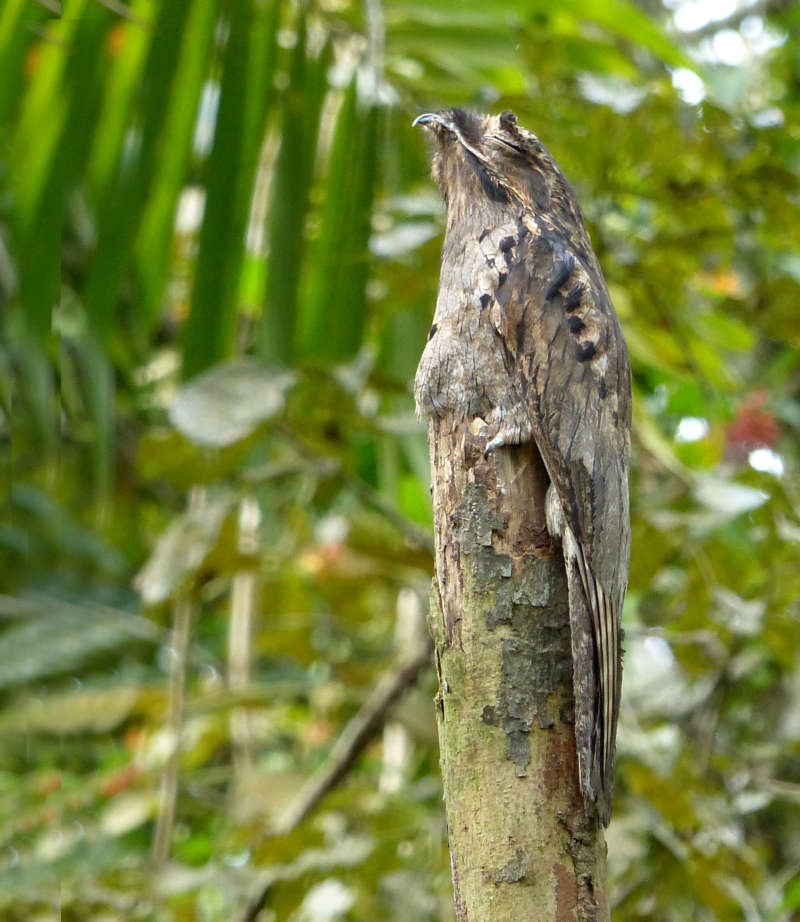
Another amazing nocturnal animal is the Common Potoo. There is nothing mundane about its ability to hide in plain sight. It nests on tree stumps chosen specifically to match the bird’s plumage. By keeping ‘living statue’ still, it melts into the surroundings. This one even tilts its beak up to look more like a tree branch in profile to fool predators. Judging from the slight protrusion by its feet, this potoo may be incubating an egg!

While the lodge offers a mix of Peruvian and international dishes, there’s no expectation of food being the highlight of our stay. Being an adventurous eater, my default is to eat whatever is indigenous over Western fare. Although the recipes may be modified to accommodate customer tastes, at least I could check out the local food culture and ingredients, which should certainly be fresher if nothing else…
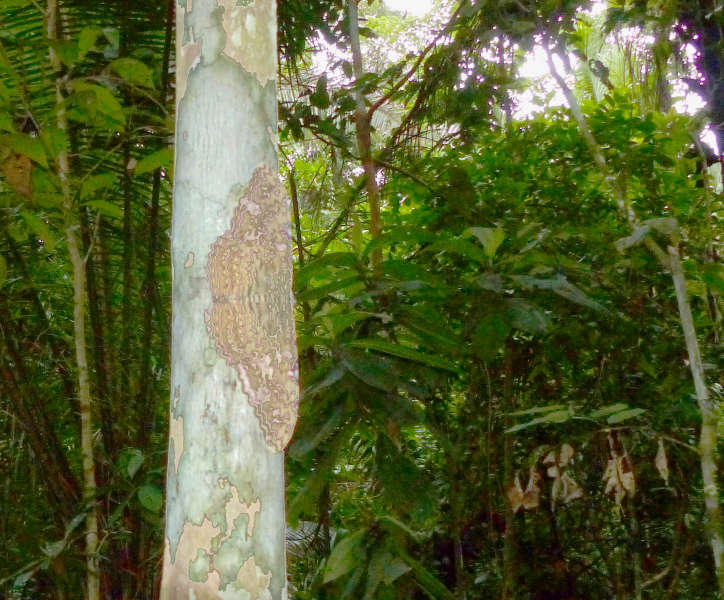
Another master of disguise is the Ghost Moth. The colors blend so well with the tree that despite its ample size, it would simply pass as part of the mottled bark at a cursory glance.
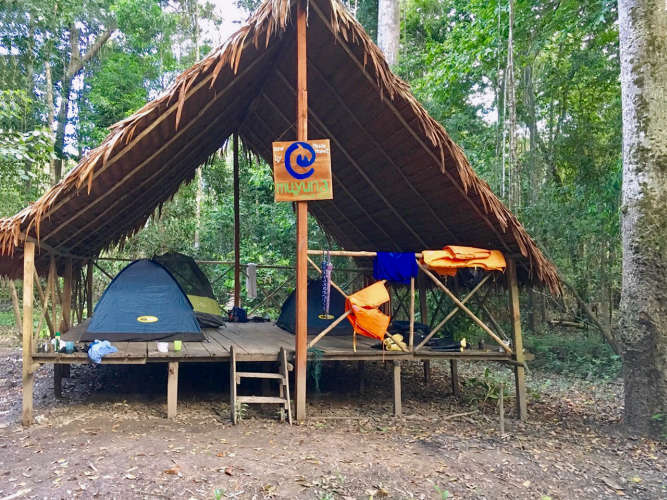
It’s finally Day 4, time to head off to camp! Like our previous Ecuadoran experience, it entailed a long boat ride and tents set up on a platform. But instead of an entourage of 5: our guide, the shaman and his son, the lodge’s cook and the boat navigator, this time we set off with just Moises and the boat navigator.
The provisions and meals were also proportionately dialed back to a cold breakfast with a dinner of soup, sandwiches and proteins from whatever fish Moises could catch along the way. Though it wasn’t what I’d prefer, I understood the logistics and challenges of keeping perishables safe in the jungle heat. Culinary excellence was obviously not the reason I went camping in the Amazon.
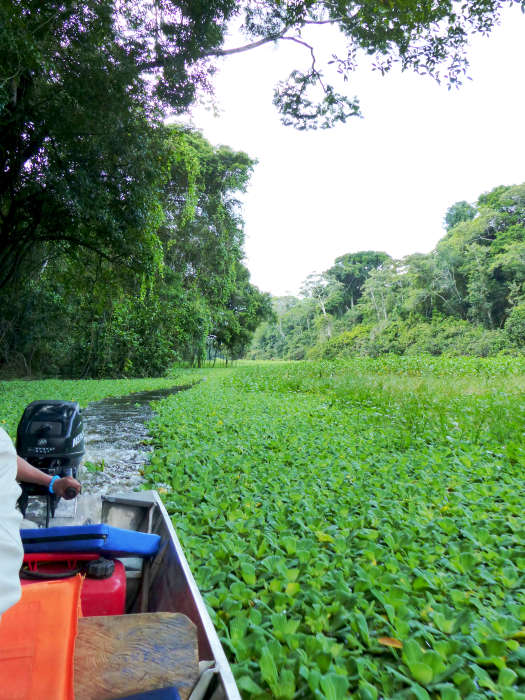
Our boat carved an inky ribbon through the sea of water lettuce. But eventually the motor became constantly tangled with the weeds and Moises had to wield his machete to free us from the green Medusa. At one point we were caught in a rip-roaring downpour. Being soaking wet on the water with thunder and lightning all around was certainly a character-building experience…
Then of course there was the matter of dinner. The fish proved uncooperative, but Moises eventually prevailed and speared a couple of fingerlings. Though small, they were as fresh as one could get!
We hiked around the area and as I had hoped, there were lots of colorful tropical birds. On the other hand, overcast skies with a dark canopy and skittish small birds made for tough spotting. But as with all good guides, Moises could identify a bird by its song, mimick calls to engage it and help increase our chance of success.
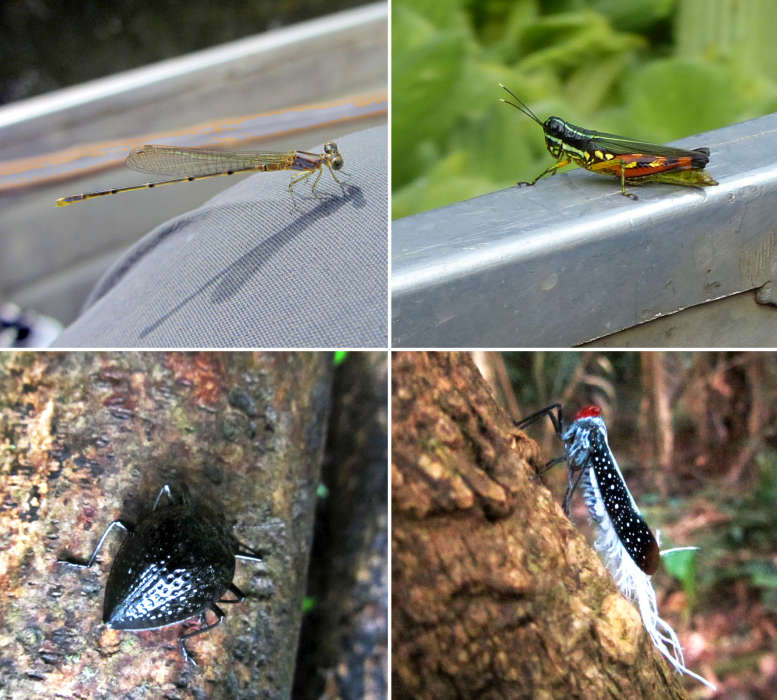
I have to say the Peruvian Amazon seems to have lots more voracious mosquitos than its Ecuadoran or Brazilian counterparts. On the camping trip, we were constantly pestered by hordes of viscous biting blood suckers that were neither deterred by my insect repellent nor fazed by the mosquito head net over my hat. I feel for the locals who face this as part of daily life in the rainforest. But mozzies aside, the diversity of insect life in the Amazon is mind boggling. From rainbow hued grasshoppers to jet black beetles with backs that resemble hammered metal, these are just a few of the Instagram-worthy insects from our Amazon adventure.
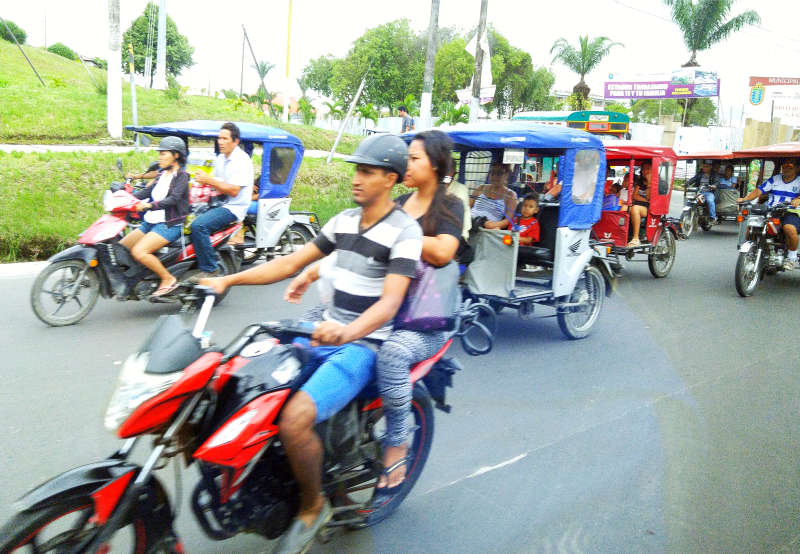
The next morning was sadly our last day at Muyuna Lodge. We decamped and enjoyed a scenic breakfast in the boat on the way back. To make our Lima flight that evening, we had to skip lunch at the lodge and book a special boat transfer to Iquitos.
Back in civilization, the 3 wheeled mototaxis were out in force. They are converted motorcycles with a bench seat and plastic enclosure for passengers in the back. We went around town for some snacks and returned to the Muyuna Lodge office to wait for our airport taxi. As the final stop of our Peruvian sojourn, Lima, one of the world’s pre-eminent food meccas beckons…


